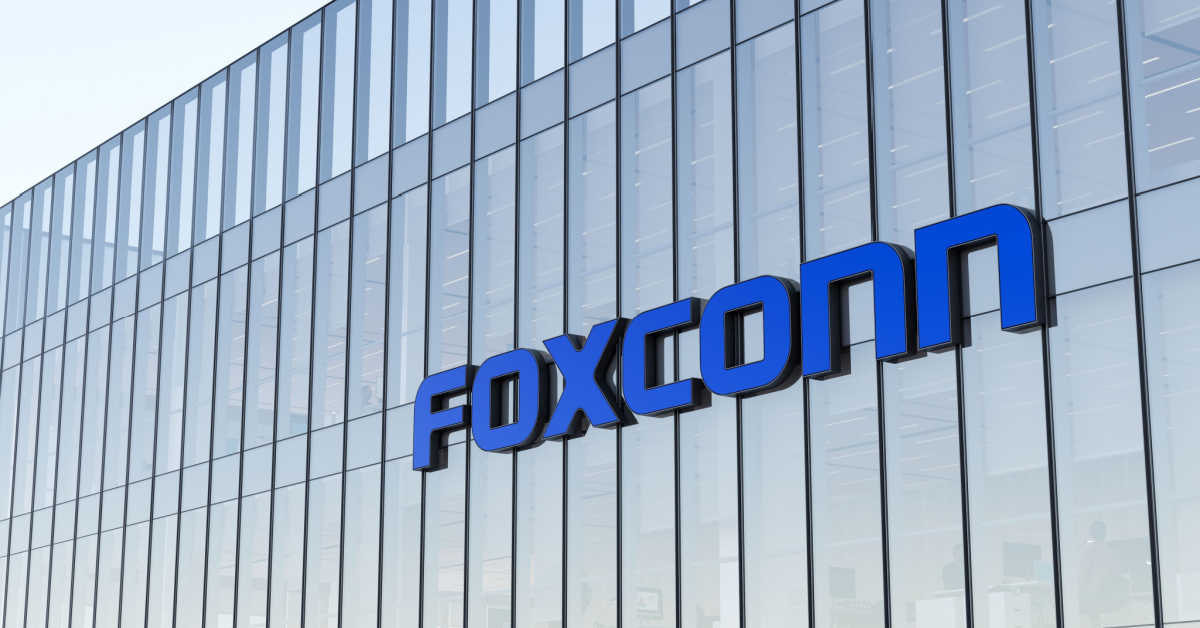Foxconn To Spend Billions Bulking Its Indian Operations – Just For Starters

Foxconn CEO Young Liu said on Monday that the massive conglomerate also known as Hon Hai Technology Group plans to invest billions expanding into India – a move that reflects a desire to diversify its bases of operation.
"On the India front, Hon Hai entered India in 2005. Our revenue, number of employees and investment scale have all seen significant growth. So far, our main operations are for ICT assembly business. Going forward, we will be actively expanding key components capacity to increase our competitiveness in India," Liu said in the manufacturer's Q2 2023 earnings call [PDF].
The chairman and CEO added that Foxconn will expand in the Indian states of Karnataka, Telangana State, Andhra Pradesh, and Tamil Nadu.
Components for consumer electronics will remain "first and foremost" among what gets built in India, but Foxconn is also looking to establish a semiconductor and EV plant in the country. EV components are slated for shipment next year.
The colossal contract manufacturer told investors its Indian operations already sprawl across nine campuses that are collectively the size of around 500 football fields. It also operates 20 dormitories for tens of thousands of employees. Foxconn's 30 factories in the country turn over around $10 billion annually – a figure that equates to less than five percent of its $216 billion 2022 worldwide revenue.
"From the perspective of India's potential market size, and if we can fully implement our plans there, I think several billion dollars in investment is only the beginning," predicted the CEO.
Liu called South East Asia a "prime choice" for future global development, thanks to its "abundance of natural resources, land, and labor advantages."
He named Thailand, Vietnam, and Indonesia as key countries he sees as expansion targets. Vietnam is already a growth market for Foxconn, with factory leases signed in February 2023. India and Indonesia were named by Liu as potential for expanding the battery market, alongside Foxconn's infamous Wisconsin factory.
- Foxconn, India's star recruit for semiconductor manufacturing, quits
- India Big four outsourcers all have people problems
- Out of nowhere, India requires PC and server makers to get an import license
- Foxconn hedges its bets: US and China will make up, but diversify just in case
Around three quarters of Foxconn operations take place in China. Liu has previously said the corporation was planning for geographic diversification in case of worsening geopolitical climates.
But diversifying into India has had its challenges. The firm backed out of a $19.5 billion semiconductor and display joint venture with Indian mining and power generation company Vedanta last month.
The deal would have leaned heavily into government subsidy schemes that reportedly ended up being trickier to cash in on than initially presented – money flows were based on volume of shipped products, meaning the expensive startup phase of new factories wasn't covered.
Overall Foxconn revenue for Q2 FY23 was $40.9 billion, representing a year-on-year decrease of 14 percent. The business downgraded its outlook for full year revenue from a flat outlook to a slight decline, citing macroeconomic factors. Specifically, those include global monetary tightening, geopolitical tensions, and inflation, said Liu.
Predictions of slight declines remained for smart consumer electronic products. Computing products outlook was adjusted to downward due to weakening PC demand. Foxconn maintained its view of "significant growth" for components and other products.
The cloud and networking division also had its outlook adjusted down despite AI being described as "on the up and up, driving global demand and relevant infrastructure demand growth."
"Many are turning their attention to generative AI, and believe that this will become the major definition of AI servers," said Liu. "Cloud Server Products (CSP) is expected to continue to grow, and AI servers especially are expected to see strong growth."
However, according to Liu, demand for other cloud and networking products has yet to return, thus overall dragging the segment down. ®
From Chip War To Cloud War: The Next Frontier In Global Tech Competition
The global chip war, characterized by intense competition among nations and corporations for supremacy in semiconductor ... Read more
The High Stakes Of Tech Regulation: Security Risks And Market Dynamics
The influence of tech giants in the global economy continues to grow, raising crucial questions about how to balance sec... Read more
The Tyranny Of Instagram Interiors: Why It's Time To Break Free From Algorithm-Driven Aesthetics
Instagram has become a dominant force in shaping interior design trends, offering a seemingly endless stream of inspirat... Read more
The Data Crunch In AI: Strategies For Sustainability
Exploring solutions to the imminent exhaustion of internet data for AI training.As the artificial intelligence (AI) indu... Read more
Google Abandons Four-Year Effort To Remove Cookies From Chrome Browser
After four years of dedicated effort, Google has decided to abandon its plan to remove third-party cookies from its Chro... Read more
LinkedIn Embraces AI And Gamification To Drive User Engagement And Revenue
In an effort to tackle slowing revenue growth and enhance user engagement, LinkedIn is turning to artificial intelligenc... Read more

